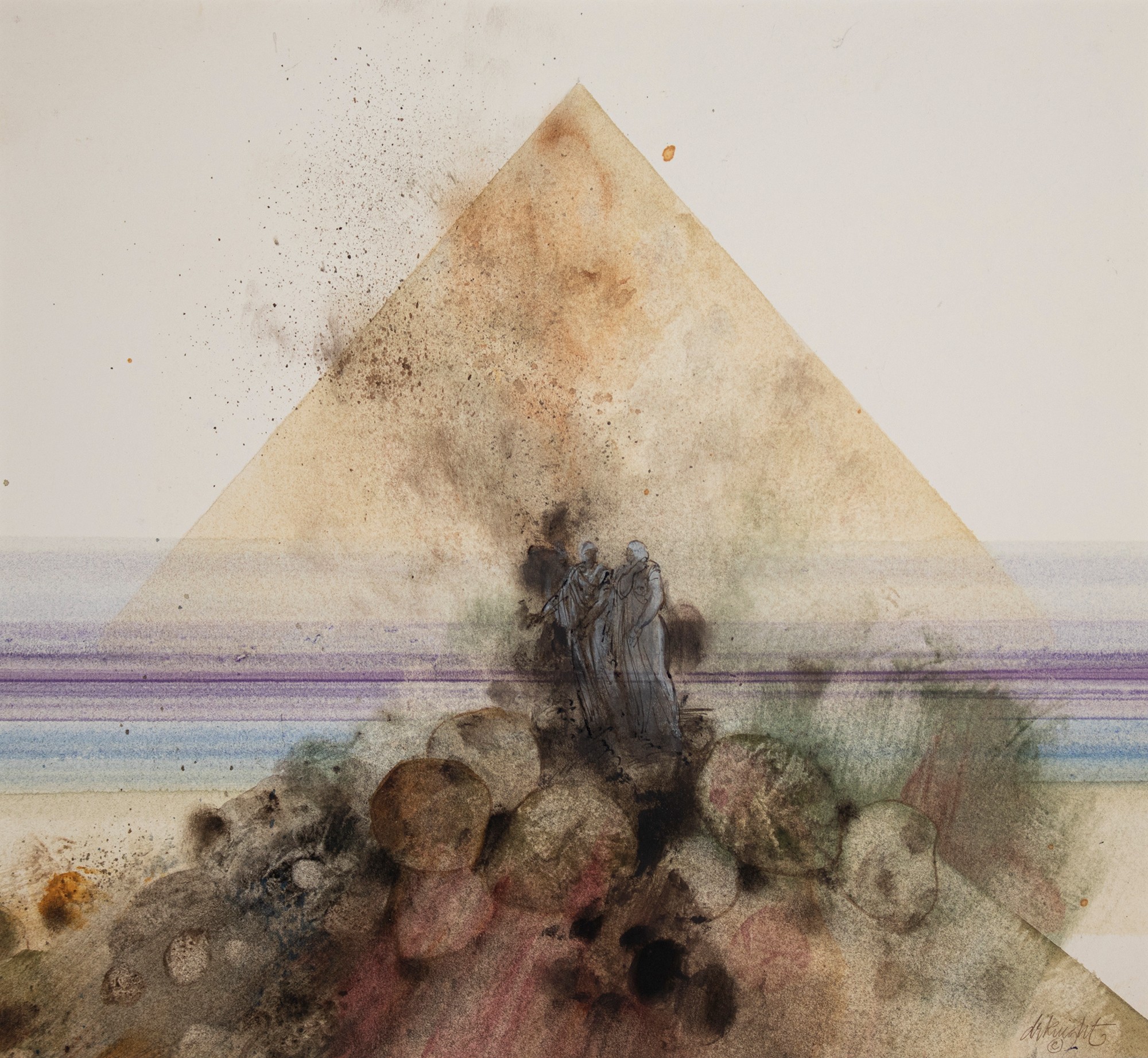In our world of pristine, hard-edged materialism to encounter an artist of such unabashedly romantic temperament as Avel de Knight is a palliative experience. When persuaded to divulge the secret dreams that spark the “nether-world” landscapes of his work, de Knight rather matter-of-factly reveals his romance with the Past—from which one may glean the most pleasurable of memories—and his pre-occupation with the Future—which is idealized in its yet unrealized state. For him the Present is but a time and space for which one can reminisce and search for the Ideal. The object of this journey is by necessity elusive, and one constantly strives and yet never quite attains it. We might be tempted to view this pursuit as perverse and even masochistic, but de Knight is quick to note that this Ideal, while ever elusive, does provide him with the means to rejuvenate his love of and belief in beauty. This sustains him through the more piquant unrelenting inescapable realities of the Present.
—Lowery Sims, former Associate Curator of 20th Century Art, The Metropolitan Museum of Art, Director, Studio Museum in Harlem . From Myths and Mirage, The Art of Avel de Knight, catalog accompanying the exhibition, Marsh Art Gallery, University of Richmond Museums, 2001.
De Knight studied at the Pratt Institute form 1941-42 before serving in the U.S. Army (1943-45); he continued his study at the Ecole des Beaux-Arts and the Academie de la Grande Chaumiere in Paris on the G.I. Bill.
He returned to the U.S. in 1956 and exhibited extensively, winning numerous awards. In 1967, his work, Mediterranean , was awarded the American Watercolor Society Prize, Grand Prize and Gold Medal for the Centennial Exhibition, and was acquired by the American Watercolor Society and donated to the Metropolitan Museum of Art. In 1988, the same watercolor was included in the exhibit, Faces and Figures: Selected Works by Black Artists (Met). De Knight later taught at the National Academy School of Fine Arts in New York.
De Knight’s medium of choice was watercolor, although he did also work in gouache and casein as well.




